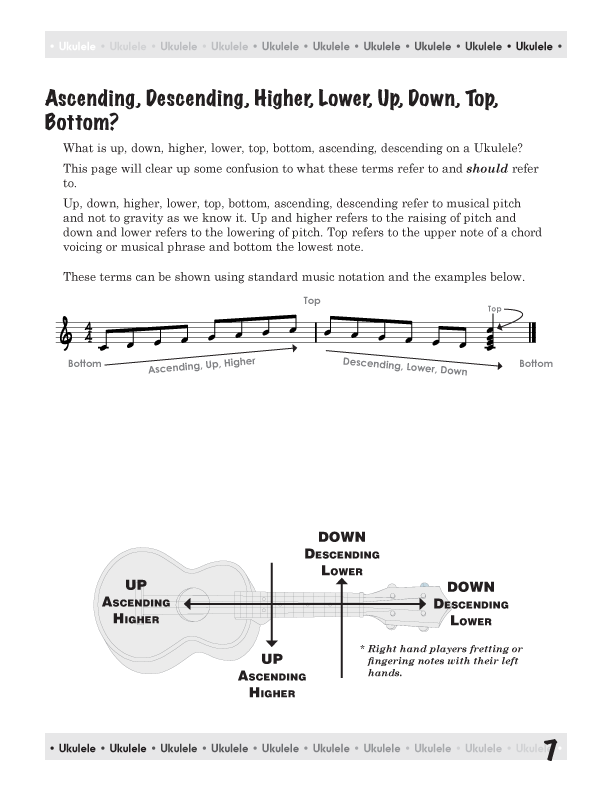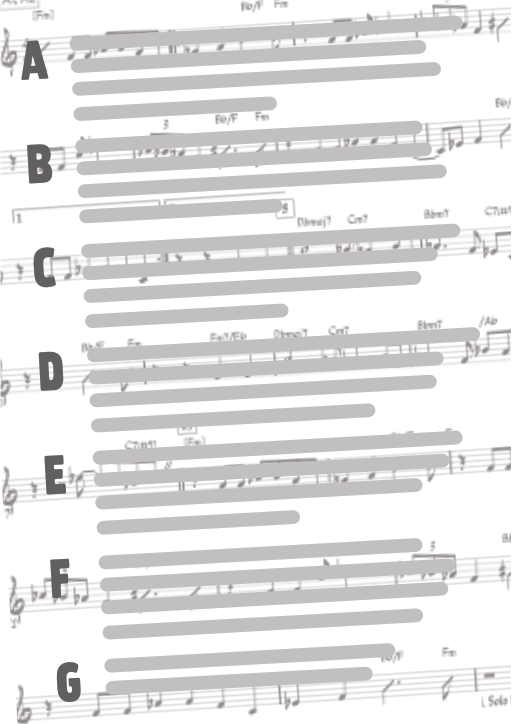There are a few things in music that students and players avoid. These are things like learning to read and knowing the notes of their own instrument. It is hard on guitar - but not so hard on ukulele. With the right guidance and plan of attack. IT IS EASY. It is really quite easy on a uke. Starting with natural notes in in the open position you can finally check off the Reading Music to do item. Learning to read standard music notation is really, really easy.








There are a few things in music that students and players avoid. These are things like learning to read and knowing the notes of their own instrument. It is hard on guitar - but not so hard on ukulele. With the right guidance and plan of attack. IT IS EASY.
Available for Premium Site Access Plans Only
It is really quite easy on a uke. Starting with natural notes in in the open position you can finally check off the Reading Music to do item.
Learning to read standard music notation is really, really easy.
Reading is the ability to reproduce music from written notation. It includes five phases; note recognition / alternate note locations, rhythm recognition, fingering considerations, communication terminology and interpretation.
There are two levels of reading. One is sight reading, the ability to reading a piece of music on demand with out ever seeing it before. This is what studio and show musicians do all the time. The other is, to be able to read to figure it out and learn learn a piece of music for performance or reference.
Reading standard music notation in open position on the ukulele is a lot easier than on guitar. It only has four strings and a limited range. In open position in C Tuning with a high G for string four, the range is middle C on string three open to C above middle C on string one, fret three.
String Four
There are two common “C” tunings for ukulele. One with a high “G” string 4 and another with a low “G” string 4.
Here is a lessons that compares the two tunings:
Alternate Note Locations
When using a high "G", C Tuning, string four contains alternate note locations for G A and B in open position. These are alternation locations of the G A and B notes found on strings two and one.
There are a few things in music that students and players avoid. These are things like learning to read and knowing the notes of their own instrument. It is hard on guitar - but not so hard on ukulele. With the right guidance and plan of attack. IT IS EASY.
Available for Premium Site Access Plans Only
It is really quite easy on a uke. Starting with natural notes in in the open position you can finally check off the Reading Music to do item.
Learning to read standard music notation is really, really easy.
Reading is the ability to reproduce music from written notation. It includes five phases; note recognition / alternate note locations, rhythm recognition, fingering considerations, communication terminology and interpretation.
There are two levels of reading. One is sight reading, the ability to reading a piece of music on demand with out ever seeing it before. This is what studio and show musicians do all the time. The other is, to be able to read to figure it out and learn learn a piece of music for performance or reference.
Reading standard music notation in open position on the ukulele is a lot easier than on guitar. It only has four strings and a limited range. In open position in C Tuning with a high G for string four, the range is middle C on string three open to C above middle C on string one, fret three.
String Four
There are two common “C” tunings for ukulele. One with a high “G” string 4 and another with a low “G” string 4.
Here is a lessons that compares the two tunings:
Alternate Note Locations
When using a high "G", C Tuning, string four contains alternate note locations for G A and B in open position. These are alternation locations of the G A and B notes found on strings two and one.
Related Lessons, Videos, Lesson Series, Songs, Books & Reference Charts, Resources & Assets, Workshops are below.
Reading Music on `Ukulele Series - Reading in Open Position, Introduction.

This series of lessons will allow you finally, to check that Reading item off your music To Do list. Learning to read standard music notation opens a world of music to you. Music notation is the Lingua franca of amateur and professional musicians alike.
Reading Music on `Ukulele Series - Reading in Open Position, Introduction.

Reading can be thought of on many different levels. 1) the ability to slowly and painfully work out the written music. 2) the ability to hear the music by looking at the notation. 3) the ability to notate your ideas in standard music notation. 4) the ability to read music as you read a book or an article. 5) the ability to communicate with other musicians in the written language of music. 6) the ability to learn songs that you have never heard.

Modular Phonetic Rhythm represents a significant advance in the teaching and application of rhythm. Eliminating many inefficient aspects of rhythm education, Modular Phonetic Rhythm streamlines the traditional educational approach, resulting in a reflexive reaction to rhythm.
Reading Music on `Ukulele Series - Reading in Open Position, Introduction.

Modular Phonetic Rhythm represents a significant advance in the teaching and application of rhythm. Eliminating many inefficient aspects of rhythm education, Modular Phonetic Rhythm streamlines the traditional educational approach, resulting in a reflexive reaction to rhythm.

Finally, learn the names of the notes of the ukulele fingerboard in C tuning .

Learn the six fingering principles to navigating the ukulele fingerboard. Fingering is one of the most universal topics. Book: Six Secrets of the Ukulele Fingering

Harmonic Analysis is the understanding of the functional sequence of chords. It is the process used to analyze the harmonic structure of a progression, song or composition. Book: Harmonic Analysis for Scale Selection and Chord Substitution

Learn to read single note melodies in the first/open position is a lot easier than you might think. Book: Ukulele – Reading Music Series – Primer

An organized collection of daily practice and reference material for the contemporary ukulele player for developing the vocabulary and knowledge necessary for single note playing. Book: Daily Practice Material for the Contemporary Ukulele
Checkout the Books & Reference Charts for additional Handy, Dandy Reference Charts.

Ukulele Fingerboard Chart for C Tuning, Low or High G – G C E A

Ukulele Fingerboard Chart for G Tuning, Low or High A – D G B E

A handy reference chart of all 15 major and relative minor key signatures. US Letter 8.5 x 11 sized (ANSI-A), A4
Checkout the Books & Reference Charts for additional Handy, Dandy Reference Charts.






.jpg)